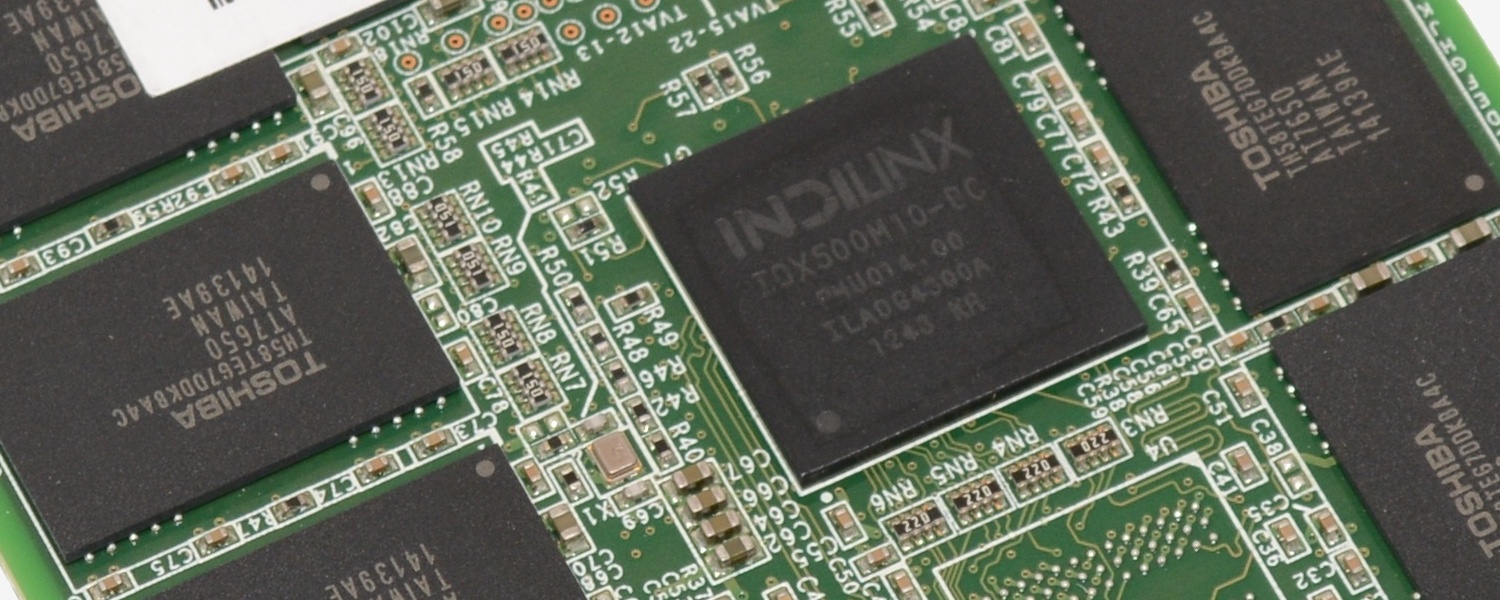The SSD landscape shifted in June with Crucial's value-oriented MX100 series arriving for as low as $0.42 per gigabyte, at least 30% cheaper than anything previously available. With that kind of pricing, large capacity models such as the 512GB version could be had for just $225 (now $215). Best of all, they barely sacrificed performance to pull it off, often rubbing shoulders with Samsung's 840 Pro and SanDisk's Extreme II.
The MX100 was an instant hit and although Samsung's 850 Pro has since secured the performance crown, the MX100 costs nearly half as much in the case of the 512GB model and isn't nearly half as slow. In many of our tests, the MX100 was just 20-40MB/s slower. This is because we have reached the limit of SATA 6Gb/s, allowing cheaper alternatives to catch up until manufacturers commit to the M.2 or SATA Express interfaces.
With the MX100 hogging SSD sales, the competition has been forced to respond. Noteworthy competitors include the Corsair Force LX series ($230 for 512GB), which uses the Silicon Motion SM2246EN controller, and the SandForce SF-2281-powered Mushkin Enhanced Chronos ($205 for 480GB). However, neither are as good as the MX100, and the memory featured in the Enhanced Chronos seems to vary.
Even Samsung's 840 Evo with its value-focused TLC memory is having a hard time competing at $260 ($0.52 per gig) for a 500GB drive, but that isn't stopping OCZ from climbing into the ring. The company has just introduced its Arc 100 SSDs, which are priced at $0.50 per gig for 480GB and 240GB models and are driven by OCZ's Barefoot 3 M10 controller along with the latest A19nm Toshiba Multi-Level Cell (MLC) flash memory.
We're not sure what to make of this offering yet, but it's clear that OCZ won't have an easy fight ahead. With its prelaunch MSRP, the Arc 100 series won't be quite as cheap as the MX100 while also being slower and having less endurance on paper.
OCZ Arc 100 SSD Series
Like the Vector 150 and Vertex 460, the Arc 100 series is limited to a maximum capacity of just 480GB. Still, making an affordable 1TB SSD probably doesn't make much sense for OCZ right now, so we are not surprised to find this capacity limit.
OCZ claims the Arc 100 series can achieve read speeds of up to 490MB/s, notably slower than the 550MB/s claimed for the Crucial MX100 series. The read speed varies between models and only the largest 480GB model offers 490MB/s reads while the 240GB version has been downgraded to 480MB/s and the 120GB model to 475MB/s.
Write speeds also vary between models with the 120GB iteration starting at just 395MB/s, followed by the 240GB at 430MB/s. The 480GB version touts a write throughput of 450MB/s, 14% higher than the 120GB model.
OCZ's new drive utilizes the tried and true Barefoot 3 M10 controller, the very same controller found in the Vertex 460.
The Arc 100's flash NAND memory (A19nm MLC) is made by Toshiba, parent company of OCZ, and is the first mainstream product to use A19nm NAND. OCZ says the Arc 100 series can sustain 20GBs worth of writes per day for three years before failing and as you might expect, it's backed by a three-year warranty. Truth be told, that's not a huge amount of writes – it's half as much as what Crucial claims the MX100 series can handle.
The Arc 100 offers AES 256-bit encryption on hardware, but there is no mention of the TCG Opal 2.0 and IEEE-1667 standards for Microsoft eDrive. This means the Arc 100 series doesn't support hardware accelerated encryption through Windows 8's BitLocker feature, which is supported by the MX100.
In terms of physical durability, a typical shock resistance of 1000G is part of the spec sheet. The Arc 100 can operate reliably at temperatures of up to 70 degrees Celsius and will survive 85 degrees when non-operational.
Like all SSDs, the Arc 100 should consume very little power. At idle, all three models consume just 0.6w. When active they typically consume just 3.45w, which is similar to the MX100.
The Arc 100 series measures 100.2mm long, 69.75mm wide and just 6.7mm thick while weighing 70 grams. The drives are compatible with both laptops and desktops, though you'll need an adapter if your chassis doesn't have a 2.5" bay. They'll also work in RAID if you buy more than one and are still backed by a limited three-year warranty.
One area where OCZ does have an edge over much of its competition is in the software department. In fact it is only Samsung that offers a better software package and their Magician utility is top notch.
The OCZ Toolbox is a simple application that doesn't require installation. It's a single executable file with just four menus and really only three things the user can do: update the firmware, execute a TRIM command and perform a secure erase. Obviously, the ability to quickly and easily update the firmware is a big deal and this makes the OCZ Toolbox a vital piece of software.





